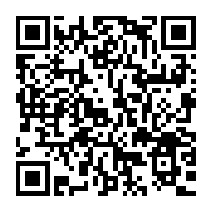Vairocana Buddha Mantra (covered by Le Minh-Luan)
Đại Nhật Như Lai (sa.: Vairocana, Mahavairocana; zh.: 大日如来, 毘盧遮那佛), Tỳ Lư Xá Na hay Tỳ Lô Giá Na Phật (do phiên âm từ Vairocana) chính là Pháp thân của Phật Thích Ca. Trong Mạn Đà La của Mật giáo thì Đại Nhật Như Lai ở vị trí trung tâm. Ngài là biểu hiện của ánh sáng Trí Tuệ chiếu soi và diệt trừ bóng tối của vô minh.
Vairocana (also Mahāvairocana, Sanskrit: वैरोचन) is a celestial buddha who is often interpreted, in texts like the Avatamsaka Sutra, as the dharmakāya of the historical Gautama Buddha. In Chinese, Korean, and Japanese Buddhism, Vairocana is also seen as the embodiment of the Buddhist concept of Śūnyatā. In the conception of the Five Tathagatas of Mahayana and Vajrayana Buddhism, Vairocana is at the centre and is considered a Primordial Buddha.
{Mantra Lyrics}
„Om namo bhagavate sarva durgati parisodhana rajaya tathagatayarhate samyaksambudhaya tadyatha Om sodhane sodhane sarva papam visodhana suddhe visuddhe sarva karmavarana visodhanaye svaha!”
{Mantra Meaning}
„May all sentient beings have happiness and its causes,
May all sentient beings be free of suffering and its causes,
May all sentient beings never be separated from bliss without suffering,
May all sentient beings be in equanimity, free of bias, attachment, and anger.”
{Mantra benefits}
This powerful mantra, the Vairocana mantra, is particularly effective in starting a purification of the physical body’s 4 great elements, and metamorphosing these elements lays a good foundation for the cultivation of success.
Thus, by reciting this mantra (aloud or mentally), and then using your wordless insight wisdom to observe the state of quiet you produce, one can quickly attain a deep meditation state.
{History of Tibetan Buddhism}
Buddhism became a major presence in Tibet towards the end of the 8th century CE. It was brought from India at the invitation of the Tibetan king, Trisong Detsen, who invited two Buddhist masters to Tibet and had important Buddhist texts translated into Tibetan.
Vairocana (also Mahāvairocana, Sanskrit: वैरोचन) is a celestial buddha who is often interpreted, in texts like the Avatamsaka Sutra, as the dharmakāya of the historical Gautama Buddha. In Chinese, Korean, and Japanese Buddhism, Vairocana is also seen as the embodiment of the Buddhist concept of Śūnyatā. In the conception of the Five Tathagatas of Mahayana and Vajrayana Buddhism, Vairocana is at the centre and is considered a Primordial Buddha.
{Mantra Lyrics}
„Om namo bhagavate sarva durgati parisodhana rajaya tathagatayarhate samyaksambudhaya tadyatha Om sodhane sodhane sarva papam visodhana suddhe visuddhe sarva karmavarana visodhanaye svaha!”
{Mantra Meaning}
„May all sentient beings have happiness and its causes,
May all sentient beings be free of suffering and its causes,
May all sentient beings never be separated from bliss without suffering,
May all sentient beings be in equanimity, free of bias, attachment, and anger.”
{Mantra benefits}
This powerful mantra, the Vairocana mantra, is particularly effective in starting a purification of the physical body’s 4 great elements, and metamorphosing these elements lays a good foundation for the cultivation of success.
Thus, by reciting this mantra (aloud or mentally), and then using your wordless insight wisdom to observe the state of quiet you produce, one can quickly attain a deep meditation state.
{History of Tibetan Buddhism}
Buddhism became a major presence in Tibet towards the end of the 8th century CE. It was brought from India at the invitation of the Tibetan king, Trisong Detsen, who invited two Buddhist masters to Tibet and had important Buddhist texts translated into Tibetan.
- Category
- Vairocana Buddha Mantra







